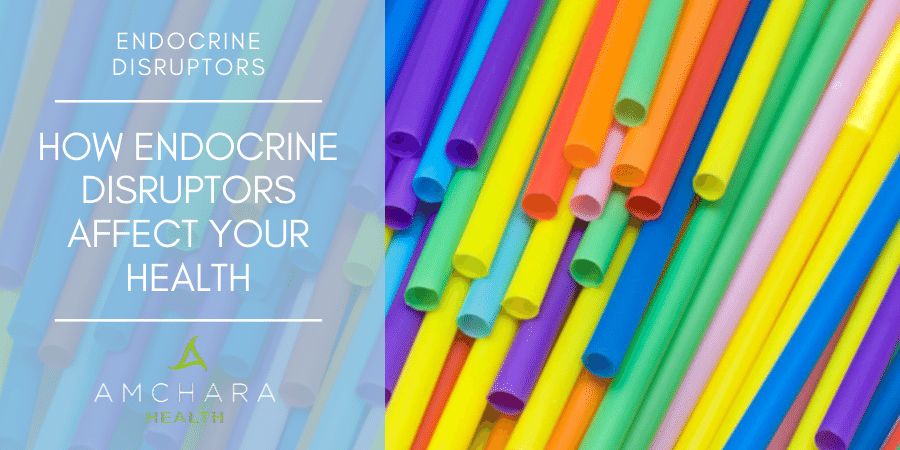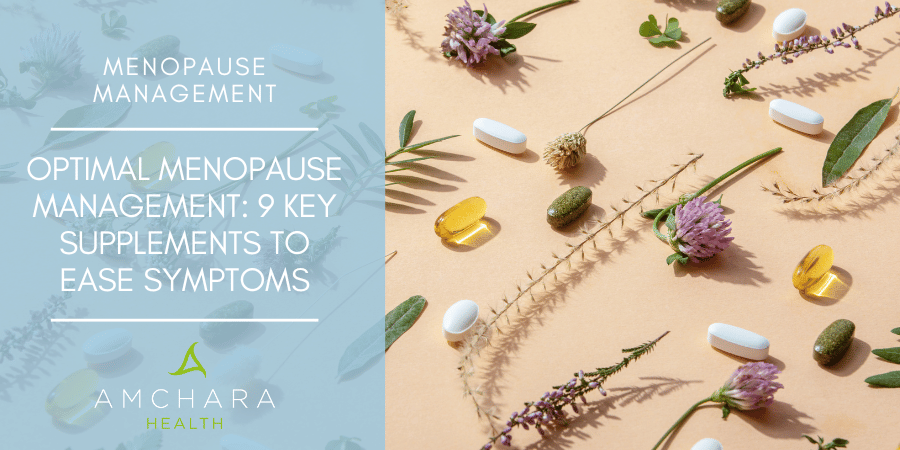Topics Covered in this article:
Endocrine disruptors, sometimes called xenoestrogens, are chemical products which interfere with the action of our bodies’ hormones.
They’re taken in via food, water, or absorbed through the skin from the environment.
That we retain these substances in our bodies is in no doubt.
In the modern internet world there is an overwhelming amount of information and it can be hard for you to find health advice you can trust, particularly as the main media channels are typically dominated with a single, orthodox narrative.
Our mission is to provide you with both insightful information and evidence-based content and we always aim to provide you with actionable knowledge and tips to help you on your journey to optimal health.
So let’s take a look at the endocrine system and its role in the body, what endocrine disruptors are and how they can affect hormonal health, as well as some simple, natural steps you can take to avoid them.
How does the endocrine system control body processes?
The endocrine system comprises a series of glands which secrete hormones and receptors that detect and react to them. Hormones are your body’s messengers, helping cells to communicate, in order to maintain homeostasis.
What are some examples of endocrine glands?
Major endocrine glands include the pancreas, which produces insulin and glucagon to regulate blood sugar, and the thyroid gland, which produces thyroid hormones controlling metabolism.
The adrenal glands produce adrenaline and cortisol, your stress hormones, along with the female sex hormone progesterone.
The testes release testosterone in the case of men, and women’s ovaries release sex hormones oestrogen and progesterone.
How do endocrine disruptors affect us?
Endocrine disruptors can bind to hormone receptors on our body’s cells – mostly oestrogen or testosterone receptors – and then mimic the action of the natural hormone, leading to overstimulation.
They’re usually many times stronger than the body’s own hormone – effectively the result is as if levels are too high.
Excess oestrogen, which we’ll be focusing on in this article, can have many adverse effects on the body.
It results in oestrogen dominance which is connected to many reproductive disorders such as menstrual cycle irregularities, infertility and even hormone-related cancers.
On the other hand, the endocrine disruptor may bind to the receptor and inhibit it – this results in an effect of as if we have too few hormones.
Finally, they may interfere with the manufacture, transport, metabolism or elimination of hormones, decreasing their activity.
Hormone levels are incredibly important to your health and are connected to all other body systems in subtle ways, so anything which disrupts your hormones is bad news for your general health.
The Endocrine Society released a statement about endocrine-disrupting chemicals, listing their effects as obesity, diabetes, female reproduction, hormone sensitive cancers and thyroid problems.
We are at our most vulnerable from the effects of endocrine disruptors when we’re in our mother’s womb.
Effects can be irreversible, and often only become apparent many years later.
The synthetic oestrogen diethylstilboestrol (DES) was prescribed to pregnant women between the 1940s and the 1970s to avoid miscarriages.
However, many years later it was found DES caused a type of vaginal cancer, as well as breast cancer, in girls and women who had been exposed to it in the womb.
Hormones in the body work at extremely small doses, in the region of parts per million.
So it follows that endocrine disruptors have the potential to exert effects, even at tiny doses.
Which products contain endocrine disruptors?
A bewildering and extensive array of chemicals, from solvents, glues, flame retardants, plastics, food preservatives, cosmetics, personal care products, pesticides, detergents, food packaging, even home furnishings and the casings of computers contain endocrine disruptors.
Which chemicals act as endocrine disruptors?
Bisphenol-A
Bisphenol-A, or BPA, has been in use since the 1950s. It’s found in many plastics and tin can linings, baby bottles and food containers.
It tends to leach from the plastic into food and water where it acts as an endocrine disruptor.
96% of pregnant women in the USA in 2011 were found to have BPA in their bodies.
Many people opt for BPA-free plastics, however there is growing evidence that substances used to replace BPA, such as Bisphenol-S and Bisphenol-F, are also unsafe and can just as easily leach into food or liquid.
In one study of 455 common BPA-free products, 70% tested positive for oestrogenic activity, and this increased to 95% when they were microwaved or subjected to dishwashing.
Alarmingly, the oestrogenic effects of these substances were in some cases stronger than BPA itself.
Parabens
First used in the 1930s, parabens are a class of chemicals used as preservatives in cosmetics and personal care products such as moisturisers, cosmetics and even toothpaste. They are also used in food and pharmaceutical preservatives.
Parabens are usually listed on labels as methyl-, butyl- or propyl- parabens.
They have been found in studies to be linked with reproductive tract problems.
One study found parabens in 99% of samples of breast cancer tissue samples.
Alarmingly, parabens have been discovered even in supposedly ‘chemical-free’ products which didn’t list parabens on their ingredients.
Phthalates
This large class of chemicals was first used in the 1920s. They are used as solvents and to soften plastics.
They are now banned in children’s toys in the EU and some parts of the USA, but are widely used in vinyl flooring, adhesives, PVC products like shower curtains as well as food packaging, detergents and personal care products.
Four types of phthalates are recognised as endocrine disruptors by the EU.
One study found one type of phthalate disrupted both insulin and glucagon sensitivity and tended to increase fat storage.
Phthalates could therefore play a role in insulin resistance.
Polybrominated diphenyl ethers (PBDEs)
These chemicals were previously used as flame retardants, in textiles or computer casings.
Research has found they can cause thyroid problems and adverse reproductive effects.
Our main source of exposure to PBDEs was from house dust, as they were released from home furnishings.
These substances appear to preferentially accumulate in children – research has shown PBDE levels in children to be 3.5 times higher than those of adults.
PBDEs were banned or phased out in Europe and the USA from 2002 in new products.
However they’ve been replaced by very similar substances, and as yet, science doesn’t know the full effects of these.
Currently, electronics manufacturers aren’t obliged to legally declare which flame retardants they are using.
Alkylphenols
These substances are used in detergents, rubber products, lubricants and resins, as well as fragrances and fuel additives.
They have been used in industry for more than 40 years.
In common with many other endocrine disruptors, their main mechanism of action appears to be oestrogenic.
Polychlorinated Biphenyls (PCBs)
These substances were previously used as coolants or lubricants.
They were subject to a worldwide ban in the 1970s, but they are fat soluble so they can accumulate in fat cells.
This means they concentrate in greater quantities as we move up the food chain.
PCBs are one of the most-studied endocrine disruptors.
They appear to reduce the levels of dopamine in the brain, which is the neurotransmitter responsible for feelings of reward, drive and pleasure.
Interestingly, low dopamine levels have been linked to ADHD.
Further studies have linked PCBs with neurodevelopment problems in foetuses.
DDT
Most of us have heard of DDT, despite it being banned in the UK since the 1980s. It was first used as a pesticide just before the second world war.
Nowadays it’s only permitted for use in certain countries to control malaria, although India and North Korea continue to use DDT for agricultural processes, despite the ban.
Problems first became evident with DDT when birds of prey began to lay eggs whose shells were too thin and fragile to survive, and scientists identified one of the first recognised endocrine disruptors.
Pesticides
Over a hundred other pesticides have been identified as capable of disrupting the endocrine system.
Pesticides are not only used when crops are growing they can also be used as a treatment for seeds, or after harvest to assist with transportation.
Worldwide use of pesticides is rising. It’s estimated to have increased from 0.49kg/ha in 1961 to 2kg/ha in 2004.
Ten known pesticides can inhibit thyroid hormone activity.
Mercury
The toxic effects of mercury are well documented, but its endocrine-disrupting effects haven’t been studied widely.
However, we do know that mercury accumulates in the endocrine system and can affect the thyroid, adrenal glands and the reproductive system.
Mercury seems to be capable of influencing the concentration of our hormones and can increase or decrease the activity of enzymes involved in hormone production.
Mercury exposure comes mostly from airborne pollution from power plants.
It builds up in the bodies of fish and shellfish, particularly those at the top of the food chain and with a long natural life.
Examples of fish with high mercury loads include swordfish, shark, bluefin tuna and Spanish mackerel.
Do food products contain parabens?
Since they are used in food preservatives, parabens are generally found in processed foods.
They’re especially high in processed meats like sausages, pies and pastries, beer, sauces, cakes, desserts, soft drinks and processed fish.
One study found we take in on average ten times more parabens from our diet than we do through our skin.
Is soya milk an endocrine disruptor?
Many alternative health practitioners recommend fermented soya products like tempeh, miso and tofu.
These all contain substances which can be converted by the body to weak oestrogens and appear to reduce the risk of breast cancer.
But soya milk contains a much lower level of these substances.
It is thought however, that compounds in soya can suppress the thyroid gland.
Are the risks from endocrine disruptors decreasing?
As science progresses and we discover more about the effects of these substances, more endocrine disruptors are recognised and banned.
However, these chemicals aren’t easily removed from our environment or our food chain, so they tend to persist for years, particularly in river and marine sediments.
One study showed pregnant women are harbouring chemicals which have been banned since the 1970s.
We still take in DDT and PCBs, mainly through diet.
There are estimated to still be 40 million tonnes of PCBs still in circulation, from silt and the demolition of old buildings, which releases the PCBs they contain.
To make matters worse, PCBs have an average of around 15 years half-life.
In other words, it takes 15 years for 50% of the chemical to break down.
They can only be destroyed on the spot using high temperature incineration.
In 2017, a killer whale found dead in the Inner Hebrides had 100 times the safe level of PCBs in its body.
This is likely to have been because this whale is at the top of its food chain, and the PCBs had built up in its prey.
In 2018, 40% of spinach analysed in the US contained the banned substance DDT.
Even the new ‘safer’ alternatives to these chemicals have not been monitored long term for safety.
According to Pesticide Action Group, modern neonicotinoid pesticides are ten thousand times more potent than DDT.
In fact, just 1g of these new pesticides could kill a staggering 125 million honeybees.
Not only this, the amount of land in the UK treated with pesticides has risen by more than 63% since 1990.
Even if an endocrine disruptor is deemed to be safe, we simply don’t know enough about the effect of such a cocktail of these chemicals on our long-term health.
230 different pesticides and their residues have been found on fruit and vegetables. Their effect may be synergistic.
How can you avoid endocrine disruptors?
Choose organic food where possible, which is produced without pesticides, artificial fertilisers and preservatives.
The Environmental Working Group in USA found in 2018 almost 70% of non-organic food samples tested positive for at least one pesticide.
A single strawberry played host to 22 different pesticides and pesticide residues!
If you can’t afford to go organic all the time, choose non-organic foods which are lower in pesticides when possible, like avocados, mushrooms, onions, cabbages and sweet potatoes.
Avoid those higher on the pesticide scale such as strawberries, spinach, nectarines, oranges, bananas, pre-packed salads, cucumber, apples, peaches and pears.
But don’t let concerns about endocrine disrupters stop you from eating plenty of fruit and veggies.
Even non-organic fruit and veg naturally contain plant substances which assist your liver to detoxify the chemicals.
Avoid processed food, which may contain parabens.
Use natural personal care products, cosmetics and sunscreens where possible. Become a label detective and stay informed about what you put on your body.
Use glass containers to store food, and don’t store fatty food in plastic containers. Never heat food in the microwave in plastic containers.
Avoid artificial fragrances. Experiment with organic natural essential oils instead.
Use natural cleaners and other household products – vinegar is excellent for cleaning glass, your dishwasher, the toilet and to get rid of limescale, so it’s great for shower heads.
Baking soda (also known as bicarbonate of soda) is a fantastic non-abrasive cleaner for stove tops and baths and is excellent as a fridge freshener.
Dust your home and office regularly with a damp cloth, and vacuum frequently to remove particles which are emitted by household products, using a HEPA (High Efficiency Particulate Air) filter.
There’s some evidence that BPA and PCBs can be eliminated through sweat. Exercise and use of a sauna may therefore help lower our body burden.
Consider a programme to support your liver and ensure it’s working its hardest to detoxify endocrine disruptors.
Our Amchara Health Practitioners can guide you through the process.
If you are suffering from hormonal imbalance, pay attention to how you can reduce your exposure to endocrine disruptors.
It’s impossible to avoid them completely, but ensuring you are not adding to your body’s level of oestrogen, by minimising your exposure to endocrine disruptors, is a positive step to take to improve and optimise your health.
Did you find this article useful?
Please share your thoughts in the comments, we’d love to hear from you.
Read next:




